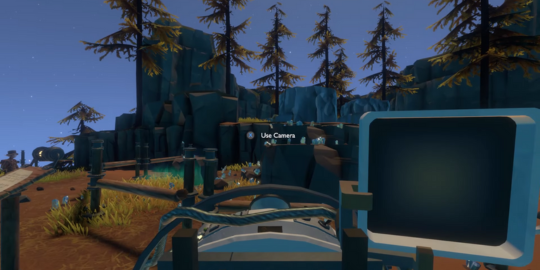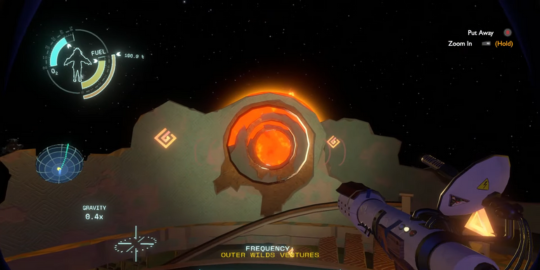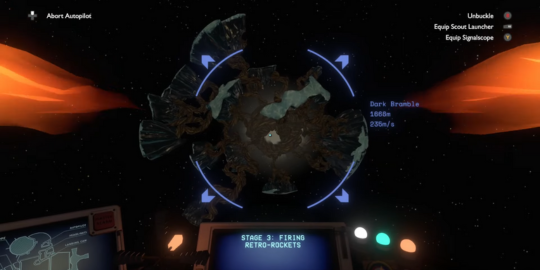
Outer Wilds, developed by Mobius Digital and published by Annapurna Interactive, stands out as a critically acclaimed open-world exploration game rooted in a fascinating science fiction premise. At the core of its narrative and gameplay mechanics lies a complex time loop, which resets every 22 minutes, providing both a unique challenge and a novel narrative structure. This article delves into the intricacies of this time loop, exploring how it enhances storytelling, impacts gameplay, and reflects deeper themes about the universe and our place within it.
Understanding the Time Loop Mechanism
The time loop in Outer Wilds is initiated from the moment the player first wakes up by a campfire on their home planet, Timber Hearth. This loop contrasts sharply with more traditional game mechanics, where progression is saved and accumulated. In Outer Wilds, when the solar system's sun goes supernova after 22 minutes, everything resets to the beginning. Importantly, the player retains all memories (and thus knowledge) of previous loops. This memory retention is crucial as it facilitates cumulative learning, which is vital for progression in the game.
Scientific Backdrop and Theoretical Underpinnings
The time loop mechanism of Outer Wilds isn't just a narrative convenience but is deeply embedded in the game’s universe physics, drawing inspiration from high concepts of quantum mechanics and astronomical phenomena. The game subtly introduces these concepts through environmental storytelling and the remnants of a long-gone advanced civilization known as the Nomai, who themselves were exploring these very phenomena. Concepts like quantum entanglement and the relativity of time are not just discussed but are made central to the gameplay and puzzle-solving mechanics.
Integration of Time Loop into Narrative

Unlike traditional storytelling where events unfold linearly, Outer Wilds uses its time loop to create a multi-threaded narrative where understanding the history of the game’s universe is possible only through repeated exploration and piecing together information from different timelines. Each loop offers opportunities to explore new places, meet other characters at different times, and gather clues that remain consistent across loops, thereby constructing a holistic view of the game world’s history and current predicament.
Role of Time Loop in Environmental Storytelling
The game’s environment also plays a key role in storytelling. The time-sensitive nature of certain puzzles (like accessing a temple only during a specific planetary alignment or exploring areas that become inaccessible after certain events like a volcanic eruption) integrates the time loop into the very fabric of gameplay. This mechanism not only heightens the player's sense of urgency but also emphasizes the temporal nature of existence within the game world, reflecting the broader existential themes of the game.
Gameplay Dynamics Influenced by the Time Loop

The time loop significantly impacts gameplay by enforcing a strict limit on how much can be achieved in each loop. This creates a natural tension and urgency that drives the player to plan their actions carefully. However, it also encourages experimentation. Since the consequences of mistakes are minimized (the player can always start afresh in the next loop), there’s a significant focus on exploration and trying different strategies.
Learning and Strategy Optimization Over Loops
One of the unique aspects of gameplay in Outer Wilds is how players must use the knowledge gained from previous loops to optimize their strategy in subsequent ones. This might involve bypassing earlier explored areas to tackle more challenging or time-sensitive puzzles. The game naturally fosters a learning curve where players gradually become more adept at navigating the universe, understanding its secrets, and managing their time effectively within the 22-minute window.
Philosophical and Existential Themes Embodied by the Time Loop

At a deeper level, the time loop in Outer Wilds is a narrative tool that explores themes of impermanence, the inevitability of endings, and the value of the journey itself. Each loop, despite leading to the destruction of the universe, offers unique experiences and insights, emphasizing that the focus should perhaps not be solely on the destination but on the experiences gathered through the journey.
Connections to Real-World Physics and Philosophy
The integration of real-world scientific theories not only enriches the game’s narrative complexity but also provides a medium for philosophical exploration. Discussions around determinism, free will, and the nature of time are fostered not just through plot devices but through the very mechanics of gameplay, encouraging players to ponder deeper existential questions.
Conclusion: The Time Loop as a Masterful Narrative and Gameplay Device
In conclusion, the time loop in Outer Wilds serves multiple purposes; it is a fundamental gameplay mechanic, a narrative structure, and a tool for philosophical inquiry. By interweaving these elements, the game presents a rich, cohesive experience that challenges the conventions of traditional video game design. Outer Wilds does not just entertain but also invites players to think critically about the nature of time, memory, and existence, making it a standout title in the realm of interactive storytelling.